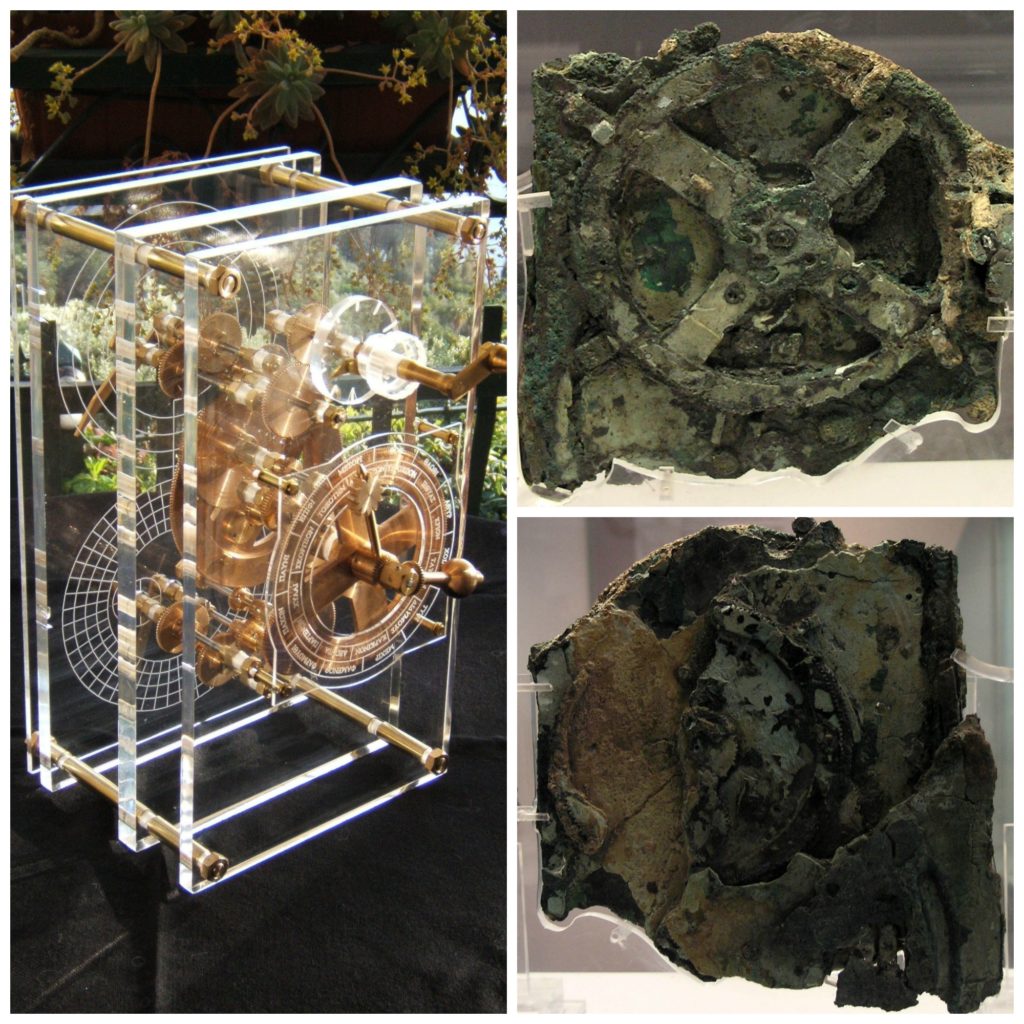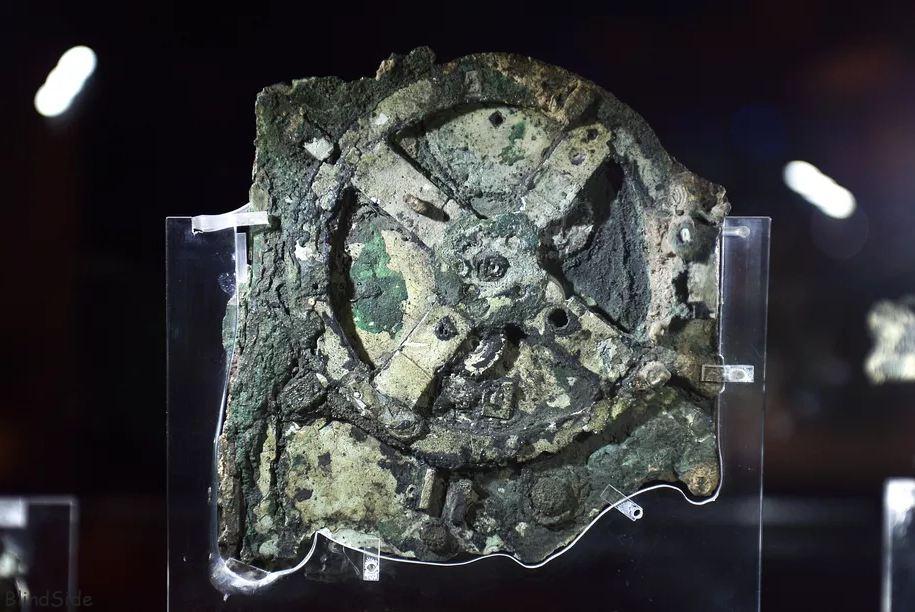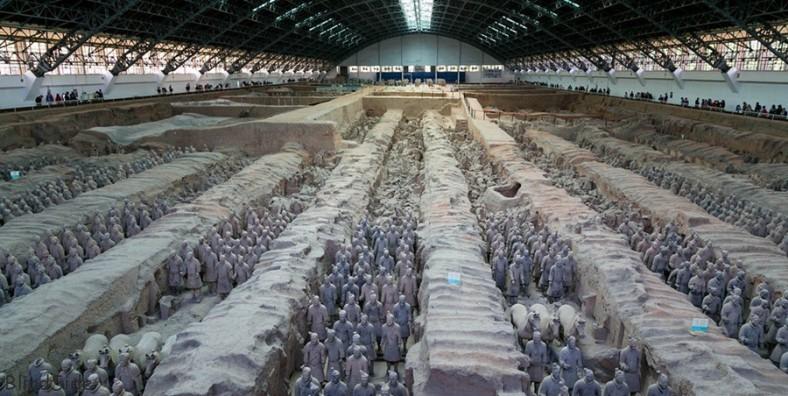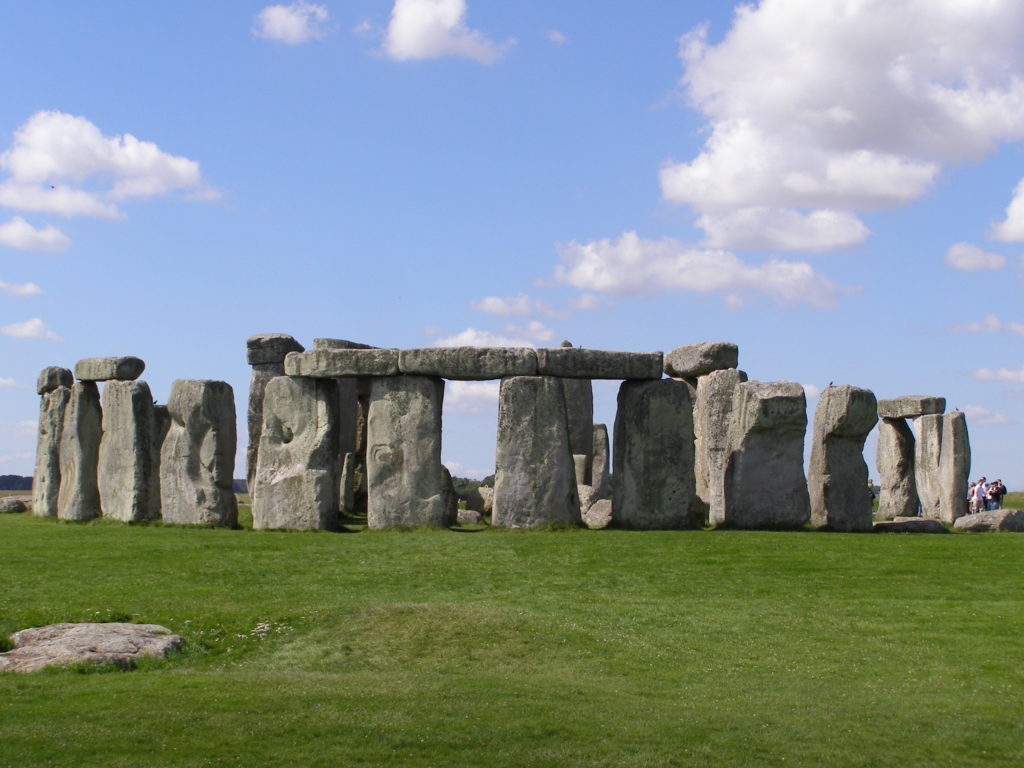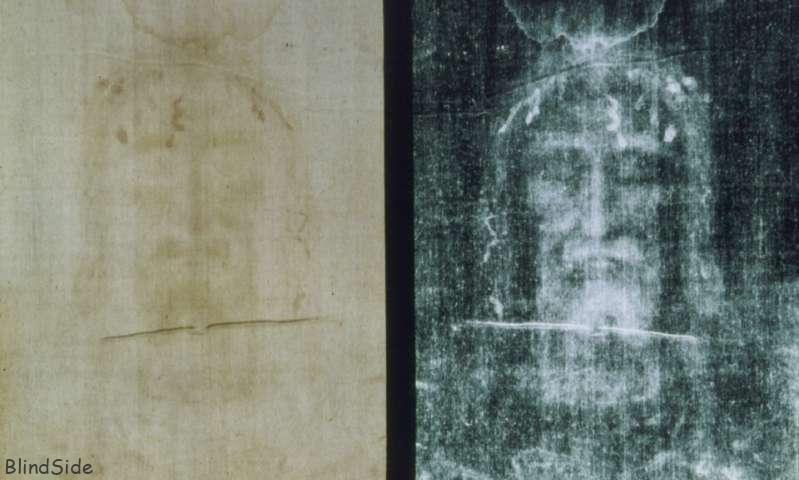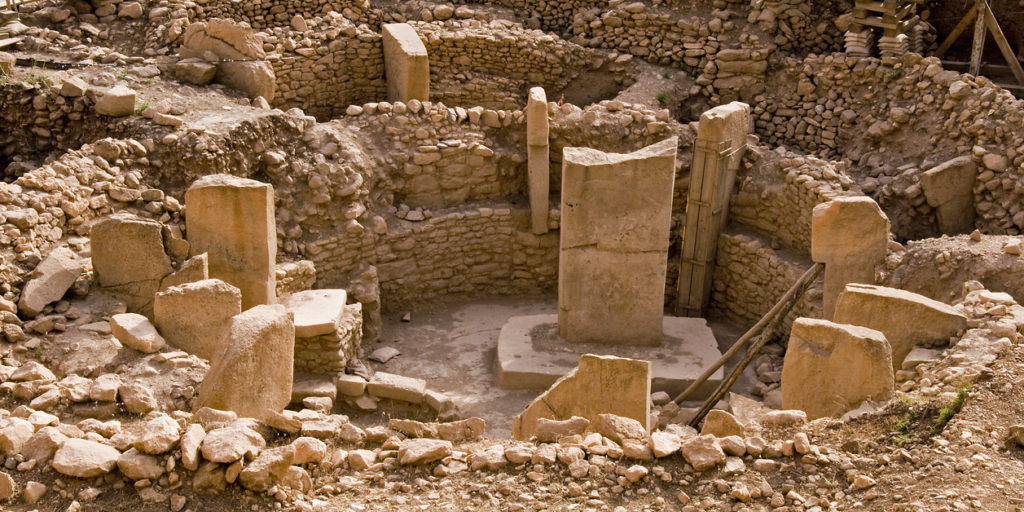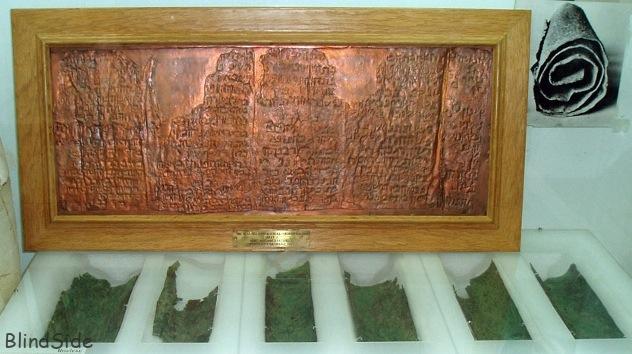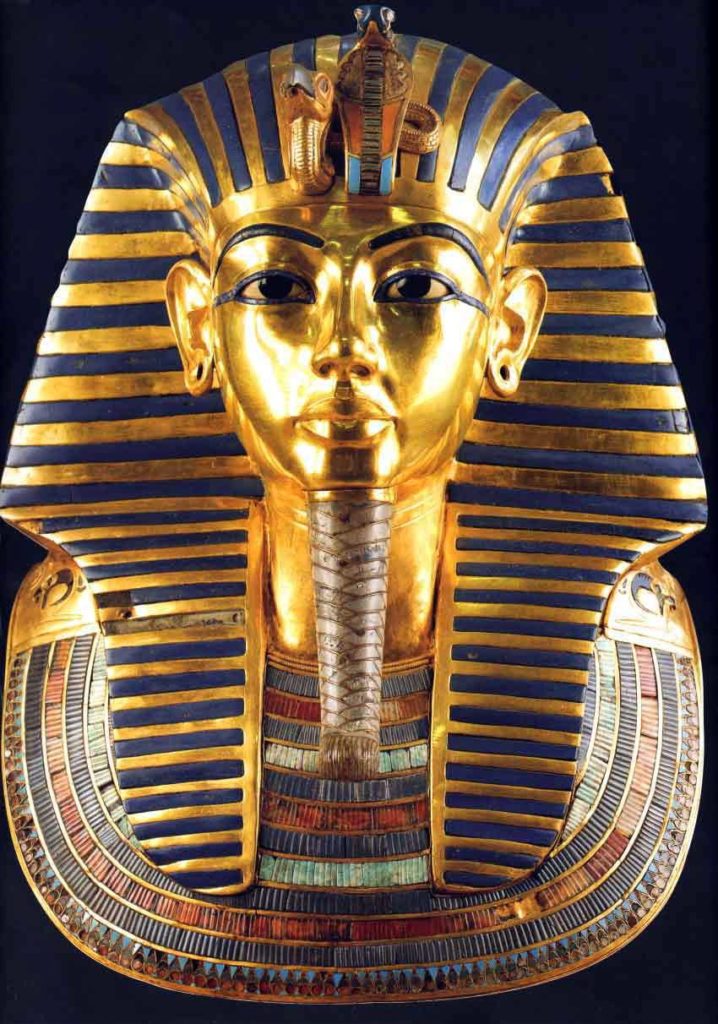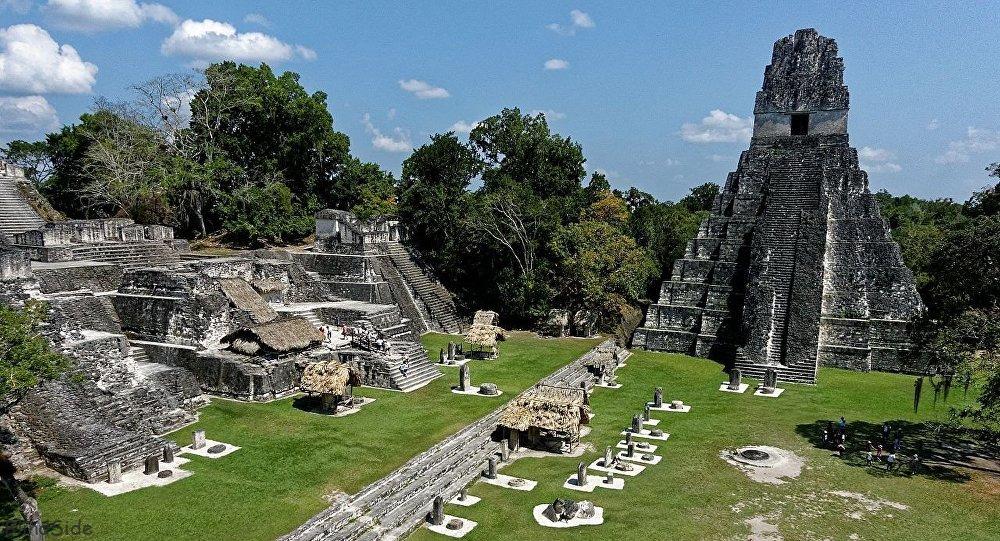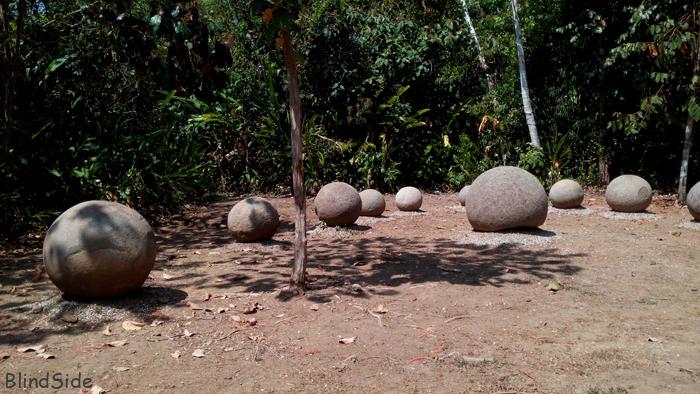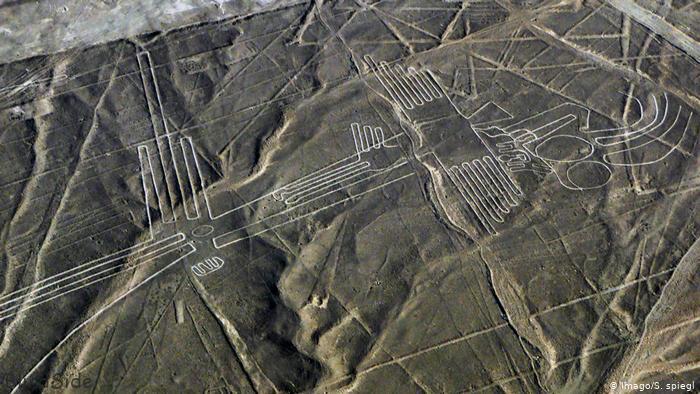We are here on the Blind Side will, a lot of time and effort has gone into archaeological discoveries across the globe, with involvement from historians, researchers, scientists and archaeologists, desperate to find the answers to the unsolved mysteries of the worlds past. From the famous medieval text written in an undecipherable language to what may have been the first computer, here are 15 Most Mysterious Archaeological Discoveries in the World.
15. The Voynich Manuscript
A famous medieval text, written in a mysterious language, dating back to the early 1400’s was purchased by Polish book dealer and antiquarian Wilfrid M. Voynich in 1912.
Named after Voynickh, the manuscript was written in code and is heavily illustrated with bizarre pictures, strange objects, and zodiac symbols.
Currently residing at Yale University’s Beinecke Library of rare books and manuscripts, the Voynich Manuscript has recently been studied by University of Bristol academic Gerald Cheshire.
He identified the mysterious writing as a ‘calligraphic proto-Romance’ language and believes it was compiled by a Dominican nun as a reference source on behalf of Maria of Castile, Queen of Aragon.
Suspicions surround Cheshire’s claims as the unusual code has eluded brilliant scholars for at least a century.
His is not the first theory either, with a further, more dubious claim in 2017 by history researcher and television writer Nicholas Gibbs.
Gibbs article in the Times Literary Supplement stated that the Voynich Manuscript was a women’s health manual, with a cluster of Latin abbreviations describing ancient medicinal recipes.
With many competing theories, there have also been several vocal critics, including Lisa Fagin Davis who said Gibbs’ motives were questionable and his explanation of Latin abbreviations made no sense.
She did, however, agree with Turkish electrical engineer Ahmet Ardic’s theory in 2018 that the strange text was a phonetic form of Old Turkish.
Fagin Davis called it a consistent, repeatable and sensical solution. High praise for a critic.
Now it’s time for the Star Topic
This intriguing photo captures what appears to be either an intricate bone carving or an ancient artefact. If it is a bone carving, the detail is unbelievable, and may provide a realistic interpretation of a pre-historic animals’ skeletal remains. Alternatively, it could be the real deal, and if it is, what is it? It’s difficult to even know which end of the ‘skeleton’ is which. Is the head at one end or is it in the middle?

Does it have a long nose like a seahorse or a pronounced bottom jaw? Is it the remains of an elaborate-looking sea creature or a land-dwelling reptile? Let’s add to the confusion a little further. There could, in fact, be a third possibility. It might be a weapon of some sort, fashioned by our ancestors hundreds, if not, thousands of years ago. This photo really does generate more questions than it does answers. What’s your opinion?
Comment down below with the hashtag #StarTopic, and we might PIN the best comment in relation to this picture. With that said, let’s keep things moving!
Mysterious Archaeological Discovery
This intriguing photo captures what appears to be either an intricate bone carving or an ancient artifact. If it is a bone carving, the detail is unbelievable, and may provide a realistic interpretation of a pre-historic animals’ skeletal remains. Alternatively, it could be the real deal, and if it is, what is it? It’s difficult to even know which end of the ‘skeleton’ is which. Is the head at one end or is it in the middle? Does it have a long nose like a seahorse or a pronounced bottom jaw? Is it the remains of an elaborate-looking sea creature or a land-dwelling reptile? Let’s add to the confusion a little further. There could, in fact, be a third possibility. It might be a weapon of some sort, fashioned by our ancestors hundreds, if not, thousands of years ago. This photo really does generate more questions than it does answers. What’s your opinion?
14. Antikythera mechanism
A fascinating mechanism responsible for changing our understanding of human history, was found over a century ago by an archeologist sifting through objects found in a ship, wrecked off the Greek Island of Antikythera.
The vessel had been wrecked 2,000 years prior, and many treasures were found in it, including a large instrument with a series of brass gears and dials. Dubbed the Antikythera mechanism by archeologists, the gears and dials were mounted in a case the size of a mantel clock.
Closer inspection revealed the intricacies of two dozen gears laid neatly inside and calibrated with the precision of a master-crafted Swiss watch.
Thought to be some sort of clock, calendar, or calculating device, the contraption’s use was debated for decades, until Princeton science historian Derek J. de Solla Price delivered his theory in 1959.
He concluded that the mechanism was like a great astronomical clock, used to predict the position of the planets and stars in the sky depending on the calendar month.
Alternatively, Price said it may also have been a modern analogue computer, using its mechanical parts to save tedious calculation.
Whatever, its exact purpose, we may never know, but it is still considered the most sophisticated device ever found from that period.
13. Qin Shi Huang’s tomb
Considered one of the largest archaeological finds of the 20th century, life-size terracotta statues of soldiers were accidentally unearthed by famers in 1974.
Believed to be just some of the 8,000 life size statues buried alongside China’s Emperor Qin Shi Huang who reigned from 250 B.C. to 210 B.C, the intricately carved figures existence was no mystery.
The Emperor was buried with the clay army, 150 life-size cavalry horses and 130 chariots with 520 horses. Historians believe the army was created to defend him in the afterlife, but what wasn’t known, was the exact location of the emperor’s burial chamber and what other treasures it might contain.
A pyramid-shaped mausoleum was found about a mile north east of where the terracotta army was discovered in China’s Shaanxi province. The mausoleum is thought to be the final resting place of the emperor; however, it has never been entered.
According to ancient documents describing its construction, Qin Shi Huang’s burial site is described as an underground palace, the most opulent tomb ever constructed in China.
The archaeological site was labeled a UNESCO world heritage site in 1987.
12. Stonehenge
One of the world’s most famous landmarks, Stonehenge has become a well visited tourist attraction for an otherwise blank English landscape.
Constructed approximately 4,000 years ago, the ring of megalithic stones presents an impressive feat considering its primitive heritage.
Although its original purpose is still shrouded in mystery, there have been many theories surrounding its construction, from an astronomical observatory, to a religious temple of healing or a monument for cremated remains.
An intriguing site, Stonehenge may have taken up to 1500 years to construct, with some of its oldest elements dating back to around 3000 BCE.
Other rumors have it being created by Merlin the Wizard. An unlikely proposition suggested by Medieval Briton Geoffrey of Monmouth, a historian responsible for a good deal of British lore.
Originally owned by the Antrobus family, the land and Stonehenge were purchased by Cecil Chubb in 1915 after it was put up for auction. He secured it for £6600, donating it to the state 3 years later. His only request was that they preserve it and allow it to remain open to the public.
To this day, the land and Stonehenge are still owned by the state, with visitor numbers reaching almost one million each year.
11. The Great Pyramids
Topping the list of the seven documented wonders of the world, are the mysterious pyramids of Giza.
Situated in Egypt, these ancient structures are widely known as the burial sites of dead pharaohs.
Built almost 5,000 years ago in what is now Cairo, these impressive structures fascinate archaeologists, historians and tourists alike.
The Giza pyramid complex is made up of three large pyramids, all set on the edge of the Western Desert, five miles west of the Nile River and about eight miles from Cairo’s city center.
The complex includes the largest, Khufu, dominating the site; the Pyramid of Khafre, and the Pyramid of Menkaure. They were all built for pharaohs, each a testament to the ancient Egyptians’ devotion to their leaders.
New tunnels and shafts built within the pyramids and clues as to who built the great monuments, are still being discovered by archeologists today.
A marvelous feat of architecture, the grand structures were built between 2589 B.C. and 2504 B.C.
The oldest and largest pyramid, Khufu’s pyramid stands 146 meters high, and was said to be the tallest structure in the world for about 3,800 years.
The Khafre and Menkaure pyramids are much smaller and simpler in design.
An immense amount of labor, technical ingenuity and skill went into the massive construction, made clear by the fact significant portions of the structures remain standing today.
10. Shroud of Turin
A medieval forgery or the real deal? Archaeologist have debated the legitimacy of the Shroud of Turin for many years.
Many believe the shroud to be the one Jesus Christ was buried in, however the theory has been quashed by rumors the cloth is more than likely a medieval forgery.
Although the long piece of twill cloth bears traces of blood and the darkened imprint of a man’s body, researchers using radiocarbon dating technology determined it was created between A.D. 1260 and A.D. 1390.
Jesus’ is thought to have died in A.D. 33. Critics of the researcher’s findings, believe they may have dated newer portions of the shroud, stitched together centuries later to keep it intact, making it appear newer than it really is.
The existing of the shroud was officially recorded by the Catholic Church in A.D. 1353, when it was found in a church in Lirey, France.
Attempting to shed further light on the mystery, forensic experts tested the bloodstains on the linen. They reconstructed the scene as it may have appeared on the day of Jesus’ crucifixion, focusing on where the limbs, and therefore blood stains, would be on the linen.
The patterns were all compared to the bloodstains on the shroud and did not fit with a person who was crucified and then put into a grave. With no conclusive evidence that the shroud is the original, the mystery remains unsolved.
9. Göbekli Tepe
Evidence that humans may have settled prior to 8,000 B.C. was found in Gobekli Tepe, a rural area of Turkey in 1994.
The archaeological discovery questions the accurate evolution of civilization timeframe, effectively blowing the original theory apart.
Huge t-shaped stone pillars, ranging in height from 3 meters to 6 meters were found, set out in a ring formation. Each pillar was carved with scenes of animals, dating back to the 10th millennium B.C.
Set within what is considered to be the oldest place of worship, Gobekli Tepe, these pillars would have taken some constructing, with most weighing upwards of 60-ton.
Often referred to as the Stonehenge of the desert, the find is one of the greatest and most important ever discovered.
Said to be around 6,500 years older than Stonehenge and at least 7,000 years older than the oldest of the Pyramids, these pillars prove that a sophisticated society existed on earth some 12,000 years ago.
Is it the remains of the world’s first temple or an elaborate burial site? We may never know
8. The Copper Scroll treasure
An archeological mystery involving an ancient scroll and buried treasure, it sounds like the plot of a million-dollar movie blockbuster.
The copper scroll behind all the mystery and intrigue, was found at the site of Qumran in 1952 and may hold the answers to finding hidden gold and silver. The problem is, no one is sure just how to decode it.
Found alongside the Dead Sea Scrolls in what is now the West Bank in the Palestinian territories, the copper scroll may date back almost 2,000 years.
At that time the Roman Empire controlled the Qumran settlement and researchers believe it may hold the key to treasure hidden by locals to stop the Roman forces from getting their hands on it.
Some clues have been unraveled, including the fact the hidden treasure could be buried in over 60 locations throughout Israel and may be worth close to US $3 billion.
Whether the historic treasure will ever be found is as much a mystery as the scroll’s language itself.
7. King Tut’s death
Did he fall from a chariot or was he murdered? To this day the death of the Egyptian boy pharaoh Tutankhamun, or King Tut, remains a mystery.
His tomb was found by British Egyptologist Howard Carter in 1922, sending archaeologists across the globe into a frenzy of excitement.
With tales of a ‘pharaoh’s curse’, and the real mystery surrounding his unfortunate demise left unsolved, it was hoped the tomb might help answer some age-old questions.
However, the mummy inside, wasn’t about to provide many answers, having deteriorated significantly due to a fire within the sealed tomb.
King Tut’s linen wrappings had been soaked in flammable embalming oils and may have reacted with the oxygen in the air, effectively cooking the corpse.
Despite his brief reign, the discovery of his tomb has made him one of the best known in history.
The “pharaoh’s curse” that anyone who comes near the tomb dies, has been dispelled, however the mystery surrounding his unexpected death remains.
A well-known Egyptologist believes that the young pharaoh died following a fall from a chariot. He fractured his leg, which became infected. Evidence of this possibility was found on the mummified remains, however damage to his skull keeps rumors of murder alive.
These were challenged by Dr. Zahi Hawass who said the piece of loose bone may have simply fallen from the skull after he died. He too believes King Tut died as the result of an accident and with new techniques allowing his leg to be scanned, we may soon know if it was an infection or something more sinister that killed the young Pharaoh all those years ago.
6. The Hobbits
Hobbits. Not the fictional characters that starred in J. R. R. Tolkien’s Lord of the Rings, but petite humans who are said to have existed 1.9 million years ago.
In 2003, bones were discovered on the remote Indonesian island of Flores. These bones provide concrete evidence that hominin Homo floresiensis once existed.
The skeleton was that of a 30-year-old adult female and measured 1.06 meters tall. The tiny human formed part of its own species, our human ancestors.
Until this discovery, it was thought that our species, Homo sapiens had been the only remaining species for over 30,000 years.
Studies suggest that the ancient ‘ hobbits ‘ are likely to have come from Africa to Indonesia, rather than being a dwarf offspring of an early man.
They were most likely a sister species of Homo habilis, one of the earliest known species of human found in Africa 1.75 million years ago.
5. The lost Maya
For the better part of six centuries, the Maya boasted a thriving empire, however their world appears to have come crashing down around A.D. 900, when what was once a flourishing civilization, simply collapsed.
The reasons for this remain unclear, but evidence suggests drought and Maya themselves, played a key role.
Clearing forests to make way for bigger cities and farmland may have inadvertently worsened the effects of the frequent droughts, with soil degradation and declining prey population contributing further to their demise.
But did they die out? Some believe that at least 40 percent of Guatemala’s 14 million people are Maya, and hundreds of thousands more live beyond the borders.
Not only are they enduring almost five centuries after they were said to have died out, but the traditions they held then, are still followed today.
4. Stone spheres in Costa Rica
Littered across the Diquis Delta of southern Costa Rica, are at least 300 giant stone spheres. An intriguing sight, the spheres are said to date back as far as A.D. 600.
The area is known locally as Las Bolas (‘The Ball’), with these monuments thought to be the work of pre-Columbian civilization
Most likely constructed from gabbro found in the foothills of the coastal mountains, archeologists believe other small stones would have been used in their creation.
Archaeologists of Finca 6 say the spheres symbolized rank and were introduced by powerful individuals for special occasions. The larger the sphere, the greater the prestige and power.
Non-experts, however, believe that the spheres were used for astronomical purposes, while others think they may have provided directions to significant places.
The truth is that no one knows for sure, and although current law prohibits them from being moved from their original location, a great many are now lawn ornaments and adorning the town parks of Palmar Sur and Sierpe. Several are housed in the National Museum in San José, and both the National Geographic Society Museum in Washington and a museum at Harvard have one on display.
3. Cleopatra’s tomb
Mystery continues to surround the location of Mark Antony and Cleopatra VII’s tomb, with archaeologists desperate to uncover it.
The last of a series of rulers called the Ptolemies who ruled Egypt between 305 and 30 B.C. Cleopatra VII was well known for her intelligence, beauty and romantic relationships. Providing the inspiration for 13 movies, Cleopatra was an intriguing character and mother to several children, whom she bore to both Julius Caesar and Mark Antony.
In 31 B.C. Cleopatra and her then lover Mark Antony died after the Battle of Actium.
They were buried together near a temple of the Egyptian goddess Isis, however the exact location remains shrouded in mystery.
In 2019, a team led by archaeologist Zahi Hawass was said to be on the verge of discovering the tomb at a site in Egypt called Taposiris Magna, however these reports turned out to be false.
To date, the whereabouts of one of our most revered heroines continues to remain a mystery.
2. Atlantis
If the rumors are true, the lost city of Atlantis has been found! But with several different locations suggested, including the Bahamas, the Greek Islands, Cuba, and even Japan, we’re not quite sure where!
A mythological island, thought to have existed prior to 360 B.C., Atlantis supposedly sank into the sea over 10,000 years ago following either an earthquake or tsunami.
Archaeologists, however, debate whether the island ever even existed!
Were the original inhabitants of the island of extra-terrestrial descent, perhaps arriving from the Lyrian star system some 50,000 years ago? A claim that has been revisited over the years, these extra-terrestrials are believed to have had an average life span of 800 years and were taller and fairer than today’s human beings.
The lost city of Atlantis is known as one of the oldest and greatest mysteries of the world.
First mentioned by the ancient Greek philosopher Plato more than 2,300 years ago, the utopian island kingdom may have existed up to 9,000 years prior to this time and should have been somewhere in the Atlantic Ocean.
Now part of folklore, the island is believed to be magnificent. Famed for exhibiting all the pleasures in the world, it is considered enigmatic and inviting, but with no technology revealing any such city on the ocean bed, and its exact location merely speculated, will we ever know the exact truth?
1. Nazca lines
Hundreds of enormous shapes, ranging from geometric lines to complicated depictions of animals, plants and imaginary figures were first spotted by a commercial aircraft in the 1920s and 30s.
These ancient illustrations are now known as the Nazca Lines of Peru. From the ground, they are nothing spectacular, but from the air, the sight is simply breathtaking, with archaeologists agreeing they are the work of the pre-Inca Nazca culture.
Made over 2,000 years ago, the etchings have been created following the removal of the red surface pebbles, revealing the lighter earth below on which the designs can be seen.
The reasons behind these drawings are still a mystery, however conspiracy theorists believe they are linked to alien landings and ancient astrology, however archaeologists say they are likely to have been part of a communication method with the Nazca’s deities.
Encompassing 800 straight lines, 300 geometric figures and 70 biomorphs, the Nazca lines stretch for miles and have been expertly preserved, due to their location in the Nazca Desert.
With very little wind and an even temperature all year round, they are in near perfect condition.
The first mention of the lines was in a book by Pedro Cieza de Leon in 1553. He mistook them for trail markers. They were brought to public attention in the 1930s following a commercial flight over the area.
The site was designated as a UNESCO World Heritage site in 1994.
Archaeologists, historians, and scientists have wondered for years about the location of hidden treasures, the legitimacy of certain claims, and the answers to cryptic codes. These and many other questions have puzzled experts for years. Will, we ever know if the existence of Atlantis is fact or fiction, or will it go down in history as an unsolved mystery?



